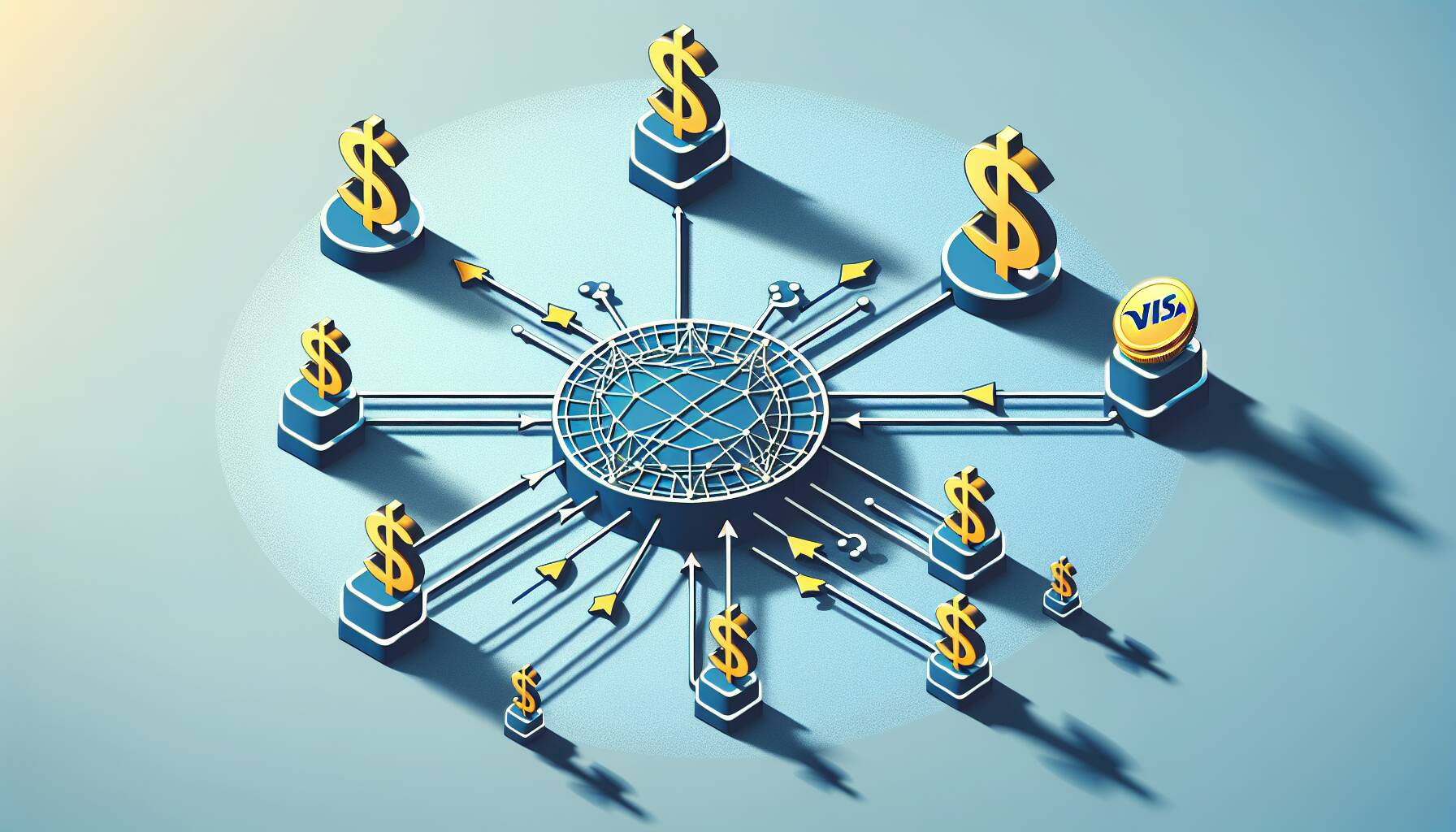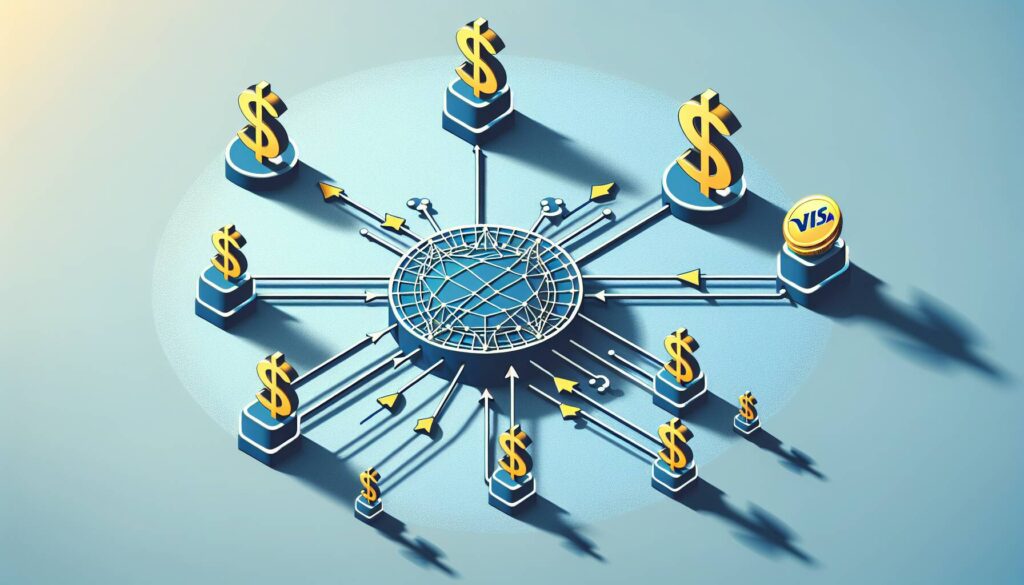In a notable shift within the cryptocurrency landscape, Visa is set to join the Global Dollar Network (USDG), a consortium of stablecoin innovators spearheaded by the U.S.-regulated digital asset firm Paxos. This strategic move places Visa alongside notable players in the fintech and cryptocurrency arenas, including Robinhood, Kraken, and Galaxy Digital. It marks the first time a major traditional finance institution has aligned itself with the USDG, which also counts Anchorage Digital, Bullish, and Nuvei among its initial members.
The USDG aims to revolutionize the stablecoin ecosystem by creating a framework that shares yields with its participants, fostering greater collaboration and liquidity. This is in stark contrast to established leaders in the stablecoin market, like Tether’s USDT and Circle’s USDC, which traditionally retain the interest generated from their reserves. With increasing regulatory changes paving the way for new opportunities, the lucrative stablecoin space is becoming more accessible for financial firms eager to explore this growing market.
Visa’s involvement comes amid a wave of interest from traditional financial giants in the cryptocurrency realm, with major card networks actively forming partnerships. Recently, Visa was reported to be collaborating with Sam Altman’s World Network, while Mastercard is aligning with the non-custodial wallet MetaMask to further integrate digital assets into mainstream finance. Although Visa has not commented on its latest strategic partnership, Paxos representatives have indicated that they cannot disclose details about potential partners at this stage.
“Stablecoins are a ‘WhatsApp Moment’ for money transfers,” a16z notes, highlighting the transformative potential of this technology.
This latest development with Visa joining the USDG is indicative of a broader trend, as leading financial institutions increasingly recognize the potential of stablecoins to reshape how we think about currency and transactions in an evolving digital economy.

Visa Joins Global Dollar Network (USDG)
The decision of Visa to join the USDG consortium is significant, impacting both the traditional finance landscape and users in the cryptocurrency space.
- Participation in USDG: Visa is the first traditional finance player to join the USDG, a group focusing on stablecoins.
- Consortium Members: USDG includes major firms like Paxos, Robinhood, Kraken, and Galaxy Digital, showcasing a strong alliance between traditional finance and fintech.
- Shift in Stablecoin Dynamics: The USDG aims to distribute yield among participants, contrasting with Tether, which retains interest on reserves.
- Lucrative Stablecoin Market: Regulatory changes are opening opportunities for more firms to engage in the rapidly growing stablecoin market.
- Visa’s Broader Crypto Strategy: Visa has been actively partnering with various crypto projects, indicating a deeper integration of digital assets into its business model.
This development may affect readers in several ways:
- Increased Adoption: The collaboration between traditional finance and crypto firms may lead to wider acceptance of cryptocurrencies and stablecoins in daily transactions.
- Enhanced Market Accessibility: As more financial institutions join the stablecoin ecosystem, individuals may benefit from improved access to efficient payment systems.
- Potential for Yield Generation: Users of stablecoins might have access to products that generate yield, contributing to personal financial growth.
- Innovation in Financial Services: The strategic moves of Visa and its partners could inspire innovative solutions in how money is transferred and managed.
Research suggests that stablecoins are a transformative force in finance, much like messaging apps revolutionized communication.
Visa’s Strategic Move into the Global Dollar Network: A Game Changer in the Stablecoin Arena
Visa’s recent entry into the Global Dollar Network (USDG) marks a significant development in the evolving landscape of stablecoins. Unlike Tether and Circle, which currently dominate the space, USDG aims to foster cooperation among its members by sharing yields rather than hoarding profits. This collaborative approach has the potential to reshape the operational norms within the stablecoin market, attracting a variety of players who may have been hesitant to enter until now.
The competitive advantage that Visa brings as a leading traditional finance player is its established reputation and vast network. By joining USDG, Visa enhances its credibility within the cryptocurrency ecosystem, potentially drawing in users who are wary of less-established stablecoins. Meanwhile, the presence of established fintech companies such as Robinhood and Kraken alongside Visa bolsters the network’s appeal to investors and consumers, providing reassurance of a robust and secure transactional environment.
However, Visa’s entry could also pose problems for existing stablecoin entities. The USDG’s model threatens to disrupt the market share held by Tether and Circle, prompting them to reassess their strategies in light of new competition. This could lead to a price war or further innovations in the way these tokens are utilized, as they scramble to retain their user base. Tether, in particular, may be at a disadvantage since its model relies on keeping interest from reserves, which could make it less appealing compared to the more collaborative approach of USDG.
Financial institutions and tech firms looking to enter the stablecoin space could benefit significantly from this development. The innovative structure of USDG may encourage greater participation and investment, opening doors for small to mid-sized companies that were previously sidelined. Conversely, the traditional banking sector may feel challenged as Visa sets a precedent that suggests a deeper integration between established financial practices and digital assets.
In summary, Visa’s participation in the Global Dollar Network positions the consortium as a formidable player in the stablecoin sector, while also stirring the pot for existing crypto giants. The ongoing evolution of regulations and market dynamics will be critical in determining how this new initiative impacts both competitors and potential entrants looking to capitalize on the growing digital currency landscape.

















